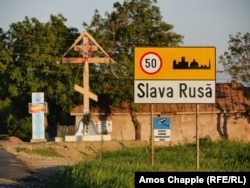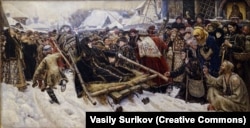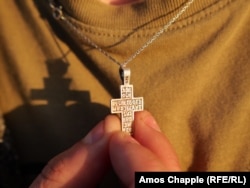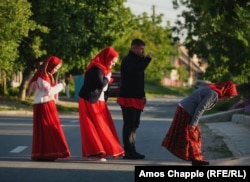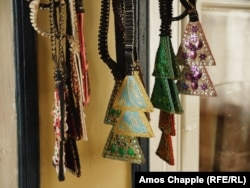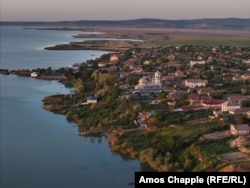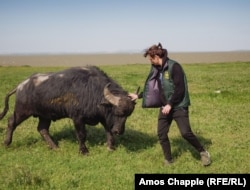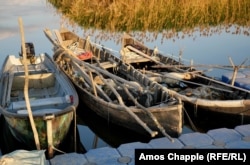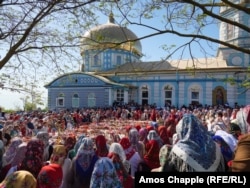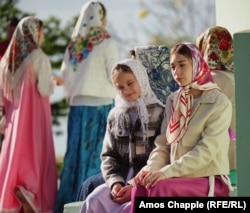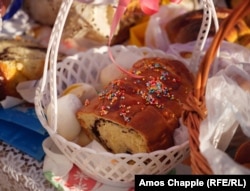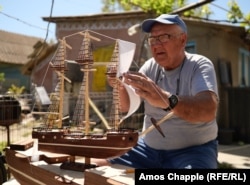
TULCEA COUNTY, ROMANIA -- If motorists approaching the village of Slava Rusa ("Russian Glory") wonder whether the settlement might have historical ties with Russia, a road sign translating the name into Russian and a giant Orthodox cross swiftly dispel doubts.
Slava Rusa is one of a handful of settlements in Romania’s far eastern Tulcea County populated by ethnic Russian "Lipovans" whose existence alongside the Danube Delta stems from a split with the Russian church authorities nearly 400 years ago.
In the 1650s, Russian religious leaders pushed to align their faith more closely with Greek Orthodox liturgy and made several “corrections” to how Russians worshipped.
Changes included the requirement that religious processions move counterclockwise instead of clockwise, that “hallelujah” be repeated three times instead of twice, and that the sign of the cross be made with three fingers representing the Holy Trinity, rather than two fingers symbolizing the divine and human duality of Christ.
The decrees made by Russia's religious authorities seem minor in retrospect but the reaction was momentous.
Some Russians burned themselves alive rather than submit to the new liturgy; other “Old Believers” fled persecution from the tsarist authorities and headed for regions around the edge of the Russian Empire where they could worship freely.
One of the places chosen by Old Believers was along the northeastern coast of today’s Romania which at the time was a boundary region of the Ottoman Empire. Some 23,000 ethnic Russian Lipovans remain in Romania today.
Lipovan Cosmin Leon says the region along Romania's coast was chosen by his ancestors for its rich fishing grounds and for its marshes, which "were easy to hide in" if any mercenaries sent by the tsar came looking for the religious dissidents.
When RFE/RL visited in early May, fishing was forbidden along the coast due to the aquatic breeding season, and Lipovan fishing boats, such as those pictured above, lay idle.
Maria Fedul, who makes much of the traditional clothing worn by Lipovans in the region, says the culture of Romania's Lipovans "is all based around the church, and faith here is very strong," so she does not worry about traditions dying out.
The origin of the name for the ethnic minority is unclear but Romania’s Old Believer Lipovans may have taken their title from the second syllable of Filip -- a prominent Old Believer's son who is said to have led a group of the Russian dissenters who emigrated to what is now Romania.
At times in the region it can feel as if one has stepped into an epoch and place far from modern Romania.
Members of the community speak in strongly accented Russian reminiscent of the Ukrainian language, and throughout Orthodox Easter, which fell this year in early May, Lipovans greet each other with the phrase “Christ has risen” to which the response is “indeed he has risen.
On Easter Sunday, Lipovans gather at church for an hourslong ceremony that concludes with the blessing of colored eggs and a cakelike bread known as Cozonac, which Lipovan women bake the day before.
In some places, it can be impossible to have a conversation due to the clanging of church bells. Throughout Holy Week, church belfrys are open to anyone game enough to clamber up and ring the bells to celebrate the resurrection.
The exact origins of the Lipovans are vague, but many say they are descended from Russian Cossacks from the Volga region of southern Russia. "We are sailors," said Artamon, a retired seaman from the coastal village of Sarichioi. "Our primary occupation was always fishing."
Cosmin Leon, who plans to raise horses on land near his hometown of Sarichioi, says that, unlike in other regions of Europe populated by ethnic Russians, there are no separatist sentiments among the Lipovan minority, which has its own seat in Romania's parliament. "We are Lipovans and our country is Romania," he says. "It's simple."




